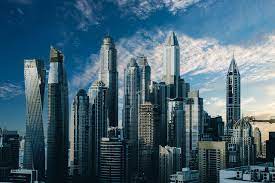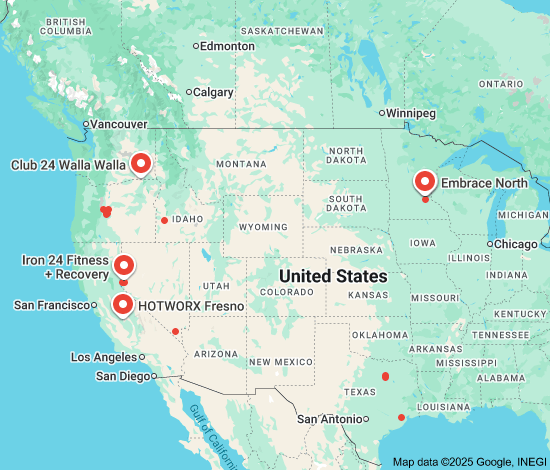The Vibrant Pulse of City Life
From the bustling streets to the towering skyscrapers, a city is a living, breathing entity that pulses with energy and diversity. It is a melting pot of cultures, ideas, and opportunities, drawing people from all walks of life to its vibrant core.
One of the defining features of a city is its constant movement. Streets are filled with cars honking, pedestrians rushing to their destinations, and buses navigating through the urban maze. The city never sleeps, with businesses open late into the night and neon lights illuminating the skyline.
But beyond the chaos lies a sense of community and connection. In a city, you can find people from different backgrounds coming together to form a tapestry of human experiences. Neighborhoods buzz with activity, from local markets selling fresh produce to cozy cafes where friends gather for coffee and conversation.
Architecture in a city tells a story of its history and evolution. Skyscrapers stand as symbols of progress and innovation, while historic buildings offer glimpses into the past. Each street corner holds secrets waiting to be uncovered, inviting exploration and discovery.
Cultural institutions thrive in cities, offering a wealth of artistic experiences for residents and visitors alike. Museums showcase treasures from around the world, theaters host performances that captivate audiences, and galleries display works that challenge perceptions and inspire creativity.
Despite its challenges and complexities, a city is a place of endless possibilities. It is where dreams are pursued, relationships are forged, and ideas are born. In the heart of the city lies a beating pulse that drives innovation, creativity, and growth.
So next time you find yourself in the midst of urban chaos, take a moment to appreciate the vibrancy and diversity that make up the essence of city life. Embrace the energy around you and immerse yourself in all that this dynamic environment has to offer.
Common Questions About Cities: Definitions, Origins, and Examples
- What is known as city?
- What is the origin of the word city?
- What defines a city?
- What qualifies as a city?
- What does a city consist of?
- Is the city of Philadelphia Open?
- What makes a town a city?
- What’s an example of a city?
What is known as city?
A city is typically defined as a large and densely populated urban area that serves as a hub of economic, cultural, and social activity. It is characterized by its infrastructure, including buildings, roads, and public services, as well as its diverse population and variety of amenities. Cities are often centers of commerce, education, and innovation, offering residents and visitors a wide range of opportunities for work, entertainment, and personal growth. Each city has its own unique identity shaped by its history, geography, and people, making it a dynamic and multifaceted environment to explore and experience.
What is the origin of the word city?
The word “city” has its origins in the Latin word “civitas,” which referred to a community or society of citizens living together in an organized manner. Over time, the term evolved to denote a larger and more densely populated settlement with defined boundaries, governance structures, and economic activities. The concept of a city has undergone various transformations throughout history, reflecting changes in social organization, urban development, and cultural practices. Today, the word “city” embodies the idea of a vibrant and dynamic urban center that serves as a hub of activity, diversity, and innovation.
What defines a city?
A city is defined by its bustling streets, towering buildings, diverse population, and vibrant culture. It is a hub of activity and innovation, where people come together to live, work, and play. The defining characteristics of a city include its infrastructure, such as roads, public transportation systems, and utilities, as well as its economic opportunities and cultural institutions. A city is more than just a collection of buildings; it is a dynamic entity that shapes the lives of its residents and visitors, offering a multitude of experiences and possibilities within its boundaries.
What qualifies as a city?
A city is typically defined as a large and permanent human settlement that serves as a center for commerce, culture, and governance. While there is no universal criteria that strictly defines what qualifies as a city, common characteristics often include a dense population, significant infrastructure such as transportation networks and public services, distinct economic activities, and a level of social organization that sets it apart from smaller towns or rural areas. Additionally, cities are often granted official status based on factors such as population size, economic importance, historical significance, and administrative structure. Ultimately, the designation of a place as a city can vary across regions and countries, reflecting the diverse nature of urban environments worldwide.
What does a city consist of?
A city consists of a complex network of elements that come together to create a dynamic urban environment. At its core, a city is made up of buildings, streets, and infrastructure that support the daily lives of its residents. Beyond the physical structures, a city is also defined by its people, culture, and institutions. Neighborhoods with their distinct characteristics, parks and public spaces for recreation, businesses and industries driving economic activity, and governance systems ensuring order and services all contribute to the multifaceted makeup of a city. In essence, a city is a living organism shaped by its physical layout, social interactions, and cultural richness.
Is the city of Philadelphia Open?
The city of Philadelphia is typically open for residents and visitors to explore and enjoy. However, it is important to check for any specific closures or restrictions that may be in place due to events, holidays, or unforeseen circumstances. By staying informed about the latest updates from local authorities and establishments, you can ensure a smooth and enjoyable experience while navigating the vibrant streets and attractions of Philadelphia.
What makes a town a city?
A town transforms into a city based on several factors, including population size, economic activity, infrastructure development, and governance structure. Generally, a city is characterized by a larger population than a town, with diverse economic opportunities and a more extensive range of services and amenities. Infrastructure such as transportation networks, utilities, and public facilities also play a significant role in defining a city. Additionally, cities often have distinct administrative structures and may be granted city status through legal or historical processes. Ultimately, the transition from town to city signifies not just physical growth but also the evolution of social, cultural, and economic dynamics within a community.
What’s an example of a city?
An example of a city is New York City, often referred to as the “Big Apple.” It is a bustling metropolis located in the northeastern United States, known for its iconic skyline, diverse culture, and vibrant energy. With famous landmarks such as Times Square, Central Park, and the Statue of Liberty, New York City embodies the essence of urban life with its mix of art, entertainment, commerce, and history. The city’s fast pace and cosmopolitan atmosphere make it a prime example of a dynamic and influential urban center.


